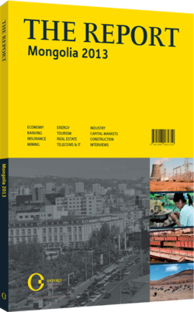Traffic relief: Addressing the congestion on the capital’s roads
As Mongolians migrate to their capital city in search of work, Ulaanbaatar is increasingly suffering from traffic congestion. The Asian Development Bank (ADB) in summer 2012 approved a loan for a bus rapid transit (BRT) system that its designers expect will have a significant mitigating impact.
RAPID GROWTH: Ulaanbaatar is boxed in by mountains to the north and south, which means growth comes along an east-west axis. It was designed in the 1950s by Soviet planners, and envisioned to accommodate 250,000 people. However, by 2012 it had around 1.3m, a number that is expected to grow to 1.4m by 2020 and 1.7m by 2030, according to the ADB. According to research from the real estate firm M.A.D. Mongolia, there are now more cars than dwellings in Ulaanbaatar: 170,000 compared with 125,000 property titles. This is because semi-nomadic herders have been giving up their rural lifestyles and pitching their gers (round felt tents) on the outskirts of the city. Ger dwellers prevent the lack of housing stock from being a growth constraint.
The city’s roads are therefore increasingly crowded. “Most of the major intersections in the city centre are severely congested, resulting in average speeds of 5-8 km per hour near the centre of the city during peak hours,’’ according to the ADB’s project data sheet for the BRT. “Traffic congestion is exacerbated by poor traffic management, insufficient parking management and enforcement, excessive and inappropriate designation of on-street parking spaces, lack of pedestrian facilities, poor driver discipline, and inadequate traffic signalling and control,” the report added.
BRT PLAN: The BRT plan will be financed with a multi-tranche loan of as much as $272.9m, according to ADB documents. The first step will be to upgrade 7.7 km of road, expand a bridge, and upgrade 14 km of existing electric-trolley bus infrastructure, such as the feeder cables, wires and substations, to help create the line. BRT stops will be placed no more than 800 metres apart, which will make the system attractive in winter by cutting down on the time users would need to walk from the nearest stop to their destination. Additional phases will include three new bus depots, the upgrading of a further 11.1 km of electric-trolley bus infrastructure, and, to be complete by 2020, some further expansions of the BRT system.
The current master plan for Ulaanbaatar’s growth envisions an underground metro system, with two lines – east-west and north-south – bisecting each other at Sukhbaatar Square, in the heart of the central business district. However, the complexity and expense of such a project makes it a challenge and the BRT plan is a cheaper option. In the future, however, Mongolian officials could revisit the metro idea because it could also create more space for underground retail concourses.
POOL OF FUNDS: The project has been made possible by Mongolia’s economic growth to date – it now passes ADB thresholds that qualify the country for both concessional financing but also non-concessional, and that means the size of projects that can be undertaken are bigger because of the bigger pool of funds that can be accessed. Mongolia has also met a similar threshold for World Bank projects.
For now, Ulaanbaatar’s mayor, E. Bat-Uul, is credited with taking some small steps to address the city’s traffic problems. In the last year bus-only lanes have appeared on Peace Avenue, although drivers frequently abuse the restriction. There are also crossing guards at major intersections in order to protect pedestrians from reckless drivers as well as to prevent pedestrians from crossing against a green light.
Government workers have been ordered to use public transportation, and a scheme to ban some cars from the road each day has been implemented based on licence plate numbers: those with plate numbers ending in 1 or 6 are banned on Mondays in the city core, with 2 and 7 restricted on Tuesdays, and so on. Other such small steps being taken include a $17m project financed by the Export-Import Bank of Korea to improve the traffic signalling at 79 city intersections, which are now to be managed from a central control centre.
You have reached the limit of premium articles you can view for free.
Choose from the options below to purchase print or digital editions of our Reports. You can also purchase a website subscription giving you unlimited access to all of our Reports online for 12 months.
If you have already purchased this Report or have a website subscription, please login to continue.

